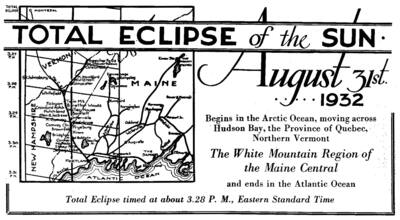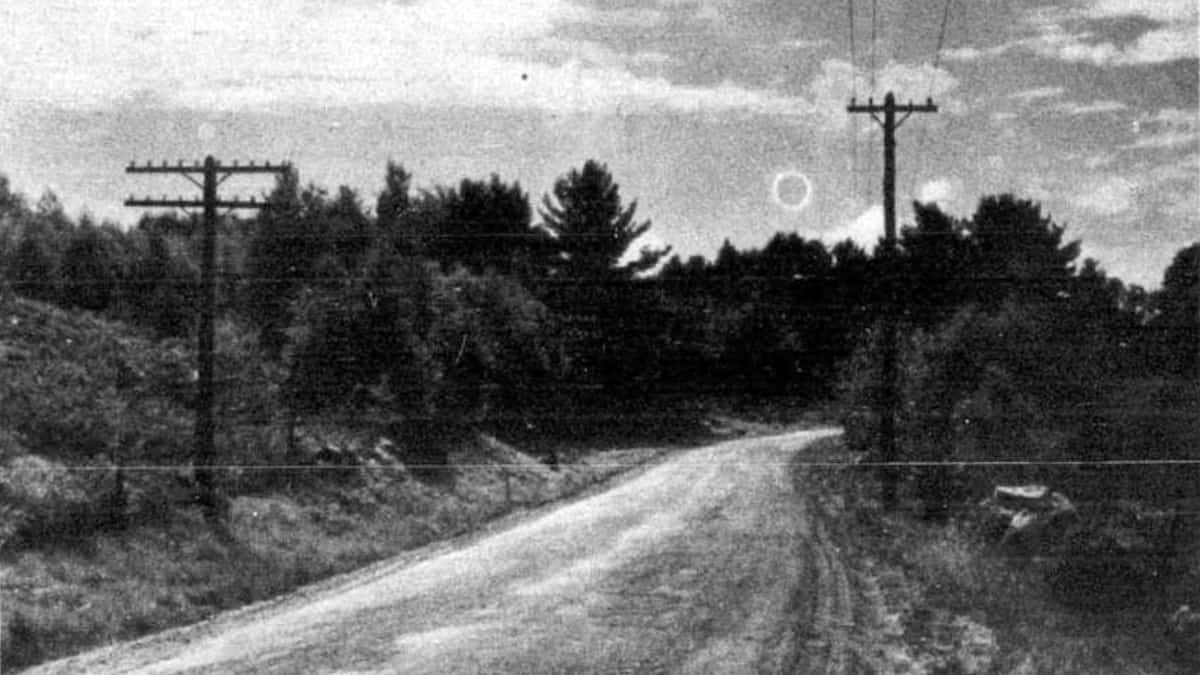At 4:24 p.m. on August 31, 1932, a “strange night lasting a few seconds (…) like the breath of God” fell on Montreal, according to the newspapers, which reported a plunge “into darkness”. Quebec experiences its first major total solar eclipse on the 20e century.
Following a completely different trajectory from that of April 8, the 1932 eclipse originated in Siberia and followed a North-South trajectory towards New Hampshire, in the United States, via James Bay. From Fort George to the American borders, the moon’s shadow directly touches the cities of Trois-Rivières and Sherbrooke.
Even though Montreal is on the verge of “totality”, it is plunged into darkness for a good minute. “Strange happenings in the streets” are reported in the next day’s newspaper. Horses lie down for the night and “frantic birds” engage in “unusual antics”.
British researchers on their way to observe the total solar eclipse of August 31, 1932. Anonymous, July 29, 1932, public domain.
Public domain
Scholars present at Acton
If clouds obstruct the view of the Sun for observers in the metropolis, the astronomers gathered at Acton Vale, in Estrie, have better luck, because the sky is cloudless. During the 99 seconds of the total eclipse, the “group of scientists” from abroad was able to make “all its observations under ideal conditions”.
It must be said that in addition to the public enthusiasm aroused by this great eclipse in the midst of an economic crisis – there will be two others on the 20e century, in 1963 and 1972 – the scientific community is still on the lookout for possible discoveries while the moon obstructs the Sun’s light.

Corridor in which the solar eclipse of August 31, 1932 will be visible in its entirety. Anonymous, public domain.
Public domain
This is because the previous eclipse was a turning point in the understanding of Albert Einstein’s theory of relativity. Science journalist Joël Leblanc, who has just published a book on the science of eclipses with astronomer Julie Bolduc-Duval, relates the experiment carried out by British astronomer Arthur Eddington.
He had placed observers at different locations on the planet during the eclipse of May 29, 1919 to demonstrate that light in the universe was being deflected by the stars. The concept of space-time and the curvature of light were thus brilliantly illustrated.

Area in which the solar eclipse of August 31, 1932 can be observed in its entirety. Anonymous, public domain.
Public domain
“Observed for the first time by the Chinese more than four millennia ago, eclipses continue to make their scientific contribution,” comments Mr. Leblanc. Eclipses have been used to measure with great precision the distance between the Earth, the Moon and the Sun, for example.
President of the Association of Science Communicators of Quebec, Joël Leblanc encourages Quebecers to fully experience this historic moment.
Where will he put on his glasses? Not decided yet. He will choose the least cloudy place within driving distance, even if it means heading towards the United States…
Eclipse family
Like animal species, eclipses are grouped into families called “saros”. Our eclipse is number 139 and began on May 17, 1501. Every 18 years, it casts new shadows on the Earth, changing slightly.

The event, visible in the east of the continent, was very popular. Maine Central Railroad Company, Portland, ME – Maine, public domain.
Public domain
“From 1 minute and 43 seconds in 1843, it will be 4 minutes and 28 seconds in 2024, and will reach the maximum of 7 minutes and 29 seconds on July 16, 2186. Then, the progression will take place inversely until a last small eclipse partial on July 3, 2763″, we can read in Eclipse.
Leblanc, J. and Bolduc-Duval J. Eclipse, when the Sun performs its circusMultiMondes, 2024. Protective glasses included.
